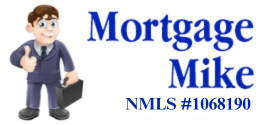Americans 4 Times More Likely to Be Equity-Rich as Home Values Increase
14.5 million residential properties in the United States are considered equity-rich, based on data which indicates that the combined estimated amount of loans secured by those properties was 50% or less of their estimated market value. The count of equity-rich properties in the fourth quarter of 2019 represented 26.7% (a little over one in four) of the 54.5 million mortgaged homes in the U.S. This is according to a new report released by ATTOM Data Solutions.
The number of those that are considered equity reach outnumbered those that were considered “underwater,” according to the report.
“Just 3.5 million, or one in 16, mortgaged homes in the fourth quarter of 2019 were considered seriously underwater, with a combined estimated balance of loans secured by the property at least 25% more than the property’s estimated market value,” according to a press release announcing the report’s findings. “That figure represented 6.4% of all U.S. properties with a mortgage, down slightly from 6.5 percent in the prior quarter.”
States that had the highest quantities of equity-rich properties in the recorded period of time were all primarily located in the Northeast and Western regions of the country, with the top five states being California (42.8% equity-rich), Vermont (39.2%), Hawaii (38.8%), Washington (35.4%) and New York (35.1%).
By contrast, the states with the lowest percentage of equity-rich properties are Louisiana (13.6%), Oklahoma (14.9%), Illinois (15.3%), Arkansas (16.3%) and Alabama (16.5%).
A property was defined as “equity-rich” for purposes of the report if it had a loan to value ratio of 50% or lower, meaning the property owner had at least 50% equity. A property was defined as “seriously underwater” if the loan to value ratio of a property was 125% or higher, meaning that the property owner owed at least 25% more than the estimated market value of the property.
American seniors own a collective $7.19 trillion in home equity, according to data provided by the National Reverse Mortgage Lenders Association (NRMLA) in conjunction with data analytics firm RiskSpan in a tabulation released in December. The NRMLA/RiskSpan Reverse Mortgage Market Index (RMMI) rose in Q3 2019 to 259.19, an all-time high since the index’s original publication in 2000. That increase was described as being primarily driven by an estimated 0.5% (or $40.7 billion) increase in the values of homes owned by seniors.
Article by Chris Clow on reversemortgagedaily.com


